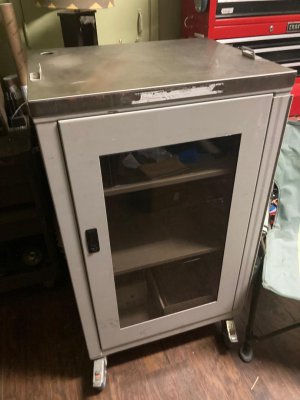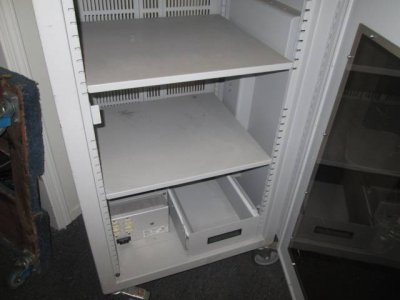- Joined
- Feb 13, 2017
- Messages
- 2,138
I am no expert, but I have been told you can run the single phase motor with a VFD and control the speed. Not all VFDs convert from single phase to three phase.
But I have some more research to do.
In the first place, an "expert" being divided into two distinct sounds, that being "ex" and "spert" yields the following definitions. "Ex" as in a 'has been' and ""Spert" being a 'drip under pressure'. Which definitely fits my opinion of "expert" opinions.
That being said, I have worked in the industrial side of electricity and electronics far longer than small computers have been around. Am I then an "expert"? See the definition above. . . I specifically deny being an expert. Take my word with that in mind.
In answer to your question:
It is possible but not very practical to overspeed. The "overhead" cost of such an operation would far exceed that of replacing the motor with a 3 phase one. Running above base speed would not be too much of a problem. No more than a 3 phase motor not designed for such use. But I don't see much use for running above base. Most times we are trying to reduce speed.
In running below base speed however there are several factors to consider. First and foremost is the centrifugal switch and starting capacitor. The entire starting network would need to be switched out of service when the motor was running. It would be possible to do externally with a "speed switch" adjusted to low enough speed. Or with a timer, or even by hand if you watched close and operated it fast enough.
Another factor is that while a 3 phase motor creates a "rotating magnetic field" inside the stator, a single phase motor does not. A single phase motor has a magnetic field that flip-flops back and forth and depends in the inertia of the rotor speed to get any practical use from the field. The start winding and capacitor provide, temporarily, a second phase to allow starting. I will refer you to the following posting to give some insight there.
Consider that while the 3 phase motor has their rotating magnetic field being slowed down, the single phase motor is simply flip-flopping back and forth at lower speed. The 3 phase motor can maintain its' torque down to near zero speed by altering the curve of current flow. Railroad locomotive AC power is an extreme example of this. But no amount of current alteration will make up for that single phase flip-flopping. The slowest I ran a single phase motor "reliably" in my experiments was at 50 cycles. And that caused significant heating. One might go to 40 cycles with sufficient cooling air flow. I didn't try it. . . An external fan was necessary at 50 cycles. I didn't have the capacity to "force feed" cooling air.
Then there is the loss of power. At low speed, a single phase motor has no usable torque. I don't have a "prony brake" as such, but simulating one with a cobbled together mish mash of wood I was able to stall the 2 pole motor used in my experiments. Not for long though, the motor is still usable at 60 cycles. But enough to convince me that such experiments were a dead end.
I will ask that you keep in mind that my experiments were not scientific, there were no measurements made and no records kept. Just an old man scratching an itch. Unsuccessfully, I might add.
Bill Hudson



